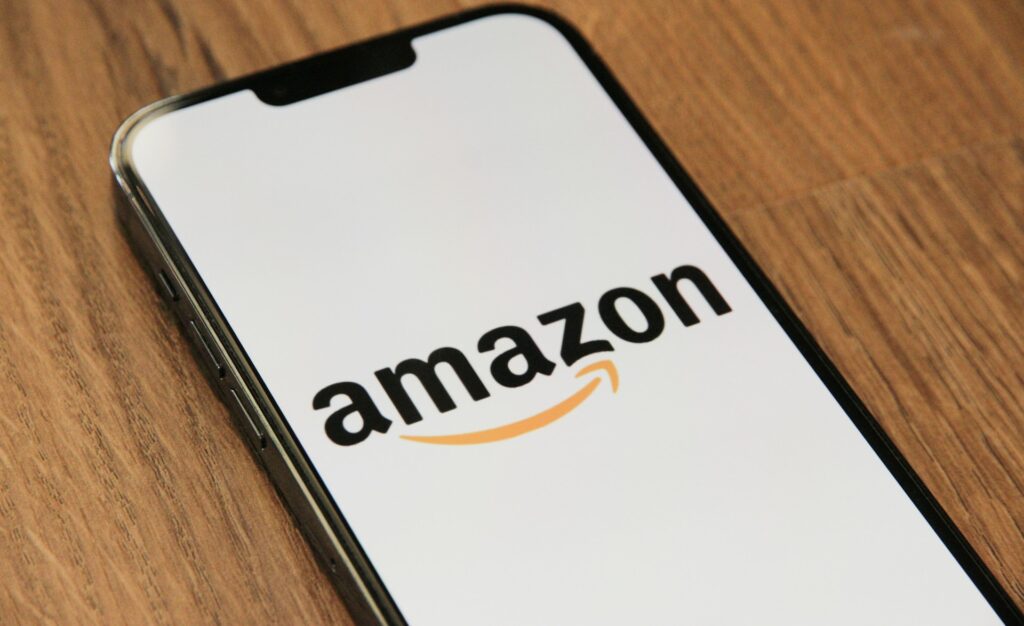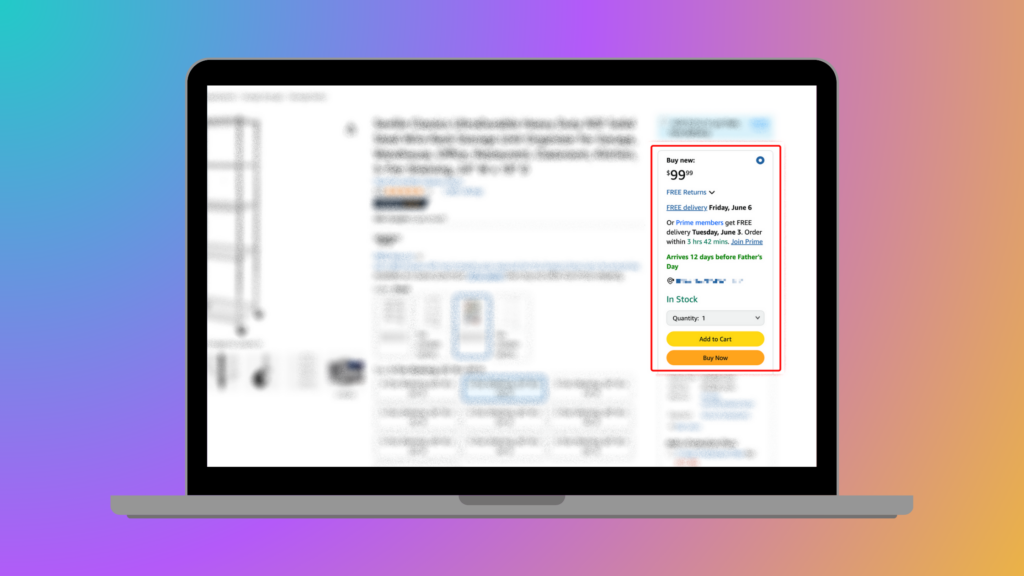- Blog
-
For Retail Vendors
Online retail in the US: The top shopping websites & other statistics
Online shopping isn’t slowing down, just shifting. These numbers reveal where US consumers are clicking, buying, and leaving carts behind.

Remember when ordering something online felt like a novelty? Those days are long gone. Online shopping has become so deeply embedded in our daily lives that it’s hard to imagine a time before two-day shipping and one-click purchases.
While the pandemic certainly accelerated ecommerce adoption, the industry was already on a steady growth trajectory. Even as physical stores have reopened and in-person shopping has returned, online retail continues to expand at a healthy clip.
For anyone running an ecommerce business, staying current with shifting consumer behavior and platform dynamics isn’t optional—it’s essential for survival. This report breaks down the most popular shopping websites nowadays and examines the trends reshaping how Americans shop online.
The evolution of consumer behavior in online shopping
Online shopping has come a long way since most consumers shopped exclusively from brick-and-mortar stores. Very few businesses had online counterparts, and ecommerce was yet to be a viable business option for aspiring entrepreneurs.
Ecommerce, from the perspective of consumers and brands, was a nice thing to have—a convenience but certainly not a necessity. Digital wallets were nonexistent; purchases were made face-to-face via cash or credit card.
Consumer behavior years ago also showed more brand loyalty than today. Because they have limited access to alternative brands, consumers’ brand preferences remain steady. During these times, price, quality, brand reputation, and limited availability were the main factors in purchase decisions.
Today’s popular marketing buzzwords, such as sustainability, were hardly in consumers’ minds. Marketing focused more on promos, value for money, and using traditional media for advertising.
When the pandemic struck in 2020, it forced many brands to adapt and shift to online business. While ecommerce was already a growing industry then, the closure of physical stores catalyzed its growth. Both companies and consumers learned how to shop online, from groceries to retail and other products.
An important thing that affected consumer behavior was the health and economic situation at the time. Because COVID-19 was a health concern, many people started to give more importance to health products and activities that lessened contact with other people. Products and services related to health, wellness, safety, and hygiene saw an increased demand.
Meanwhile, the economy also suffered losses because of low productivity, supply chain interruptions, and inflation. Uncertainty about finances has made consumers more conscious and intentional about the products they purchase, focusing more on value and necessity.
The tech industry likewise contributed to the rapid growth of ecommerce during and even after the pandemic. As most consumers began to buy products and services online, companies were quicker to identify customer pain points and improvement areas to refine the shopping experience. Digital payment methods began to be developed and offered more convenient ways to pay. Deliveries were streamlined to be more efficient because of the increased volume of orders.
Today, online shopping remains a significant element of commerce in general. Even though the pandemic is over, consumers’ attitudes have shifted from ecommerce as a mere convenience to being a vital part of their daily lives. Trends such as voice searches, mobile shopping, and free shipping make online shopping more attractive.
Key trends shaping ecommerce in 2025
As ecommerce continues to expand, some trends dictate the industry’s evolution.
Consumers prefer a multi-channel approach
The convenience of online shopping has made it easy for consumers to compare products and prices across different platforms and markets. This multi-channel approach is not a new trend but a continuation of consumer behavior from previous years.
Consumers report visiting multiple sites before deciding on a final purchase, with most saying they visit between 2 and 4 websites. People tend to spend more time on different websites for specific product categories, such as consumer electronics, before purchasing.
Finally, this trend has also extended to online browsing. Globally, there is a spike in product browsing without intending to buy. This may be because more people search to discover new products or research about the market.
Online marketplaces rule ecommerce, but social media is catching up
Online marketplaces are still the top online shopping platforms, but the US trends show that social shopping is becoming more popular. Many consumers discover new products through social media.
While only a fraction of them actually purchase products directly from social media accounts, the number is increasing. Trust is still a significant factor in consumers’ hesitation to buy from social media, but these platforms still greatly impact brands’ online presence and engagement with their customers.
Free shipping and returns are important
Among the services consumers look for in online shopping are free shipping and easy returns. Customers now expect delivery to be fast, with more than 90% of US customers reporting that they expect two- to three-day shipping as standard, according to a McKinsey report. Same-day shipping has also entered the market as a special service that attracts consumers.
Shipping issues are a major reason for cart abandonment, with extra costs making up about half of the reason that customers leave during checkout. Delivery times also factor into consumers’ decisions to abandon their carts. Aside from this, they also prefer stores that offer an easy return and refund process. This may be a bit burdensome for sellers, but they are services can boost sales for online sellers.
Technology impacts ecommerce
As technology advances, so do consumers’ expectations when it comes to shopping experiences. The development of artificial intelligence (AI) and virtual reality (VR) technologies has disrupted the way we shop. VR tech, which includes augmented reality (AR) and mixed reality (MR), introduced new experiences such as virtual try-ons, virtual pop-up stores, and even AI chatbots for customer service.
Aside from enhancing both in-store and online shopping, AI and VR are used in ecommerce to personalize the shopping experience for consumers. AI uses customer data such as browser behavior and purchase history to analyze a customer’s preferences and offer them more relevant recommendations.
Most popular shopping websites in 2025
The top online retailers in the U.S. by ecommerce net sales (2024), according to Statista:
- Amazon.com – $143 billion
- Walmart.com – $79 billion
- Shein.com – $22+ billion
- Target.com – $20.5 billion
The major players have remained relatively consistent since 2023, though their relative positions have shifted somewhat. Here’s how the market share looked in 2023:
- Amazon – 37.6%
- Walmart – 6.4%
- Apple – 3.6%
- eBay – 3%
- Target – 1.9%
- The Home Depot – 1.9%
- Costco – 1.5%
- Best Buy – 1.4%
- Carvana – 1.4%
- Kroger – 1.3%
While the top names are familiar, Shein’s ascent to the number three position represents the most significant change in the competitive landscape. Target has also improved its standing, moving from fifth place in 2023 to fourth in 2024 by dollar volume.
Amazon
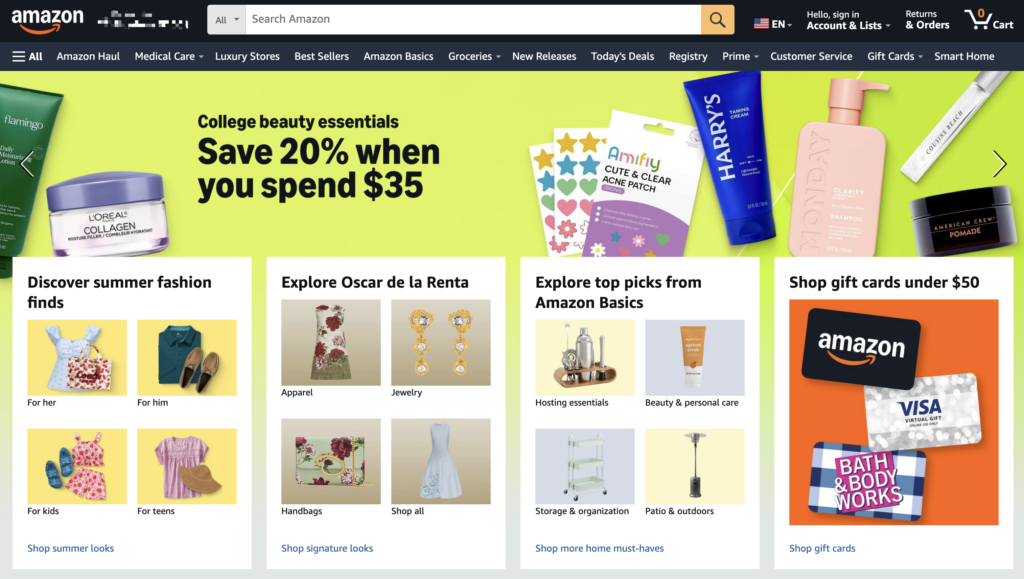
By far the most popular ecommerce platform in the US, Amazon is leaps and bounds ahead of its competitors. The ecommerce giant commands a substantial 45% of visits to online shopping websites in the first quarter of 2023, making it the most visited ecommerce website in the US and globally.
Third-party sellers are responsible for 60% of the products sold on Amazon, highlighting the significance of small and medium enterprises for the platform and ecommerce in general. Amazon’s fulfillment service, FBA or Fulfillment by Amazon, is commonly used by sellers without the resources and workforce to complete orders in-house.
Because of this service, the buying experience from Amazon is more seamless and consistent. Customers can expect their deliveries in the specified time window. For any questions or issues about the product or transaction, FBA also handles customer service and returns for the seller.
Walmart
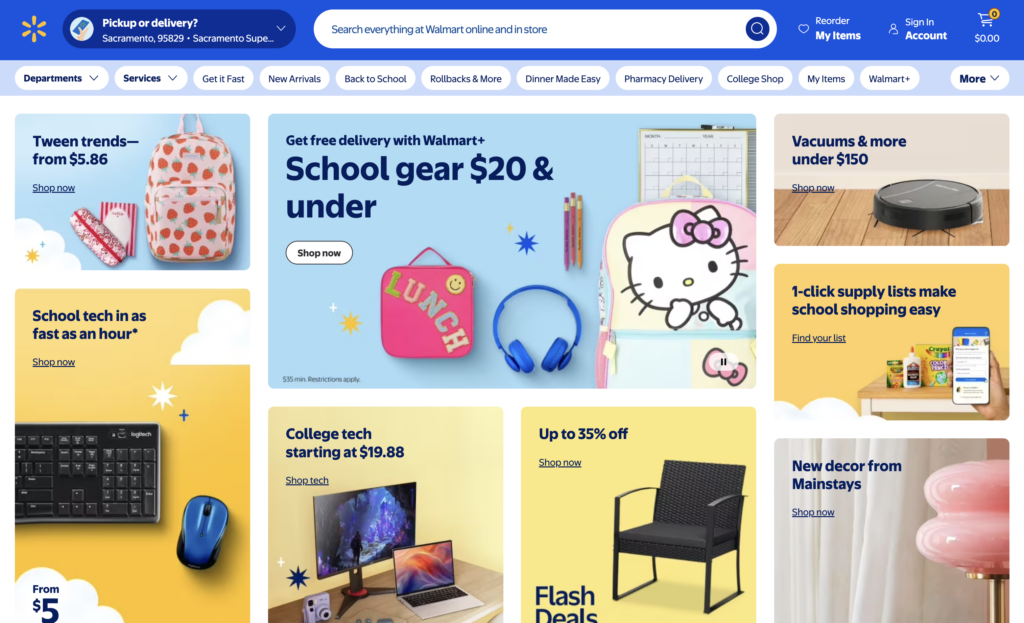
Walmart is a household name in the US when it comes to retail, with 60% of consumers shopping from Walmart in-store weekly. Thanks to its vast offline market, its online counterpart, Walmart Marketplace, has also seen decent success, coming in second to Amazon with a 6.4% share of retail ecommerce sales.
The company was a bit late to the game when Amazon was already establishing its dominance. Still, it hasn’t stopped the retail giant from adapting well and giving its shoppers more choices online.
With over 490 monthly visitors, Walmart’s market is also a force to be reckoned with. It plays to Walmart’s advantage that they have an already established name in retail shopping, so they can leverage customer loyalty and entice their patrons to shop online using familiar deals and promos from their physical stores.
The company offers multiple seller services for vendors on their platform. They have their own Walmart Fulfillment Services, Walmart Connect for sponsored ads, and Brand Portal for intellectual property protection.
A drawback for sellers of Walmart Marketplace is that they only accept established ecommerce sellers, so entrepreneurs with no history of success in an online marketplace or other ecommerce platforms are not eligible to join. This barrier to entry may be a formidable obstacle for aspiring Walmart Marketplace sellers, but it assures consumers that every seller on the platform is legitimate.
Apple
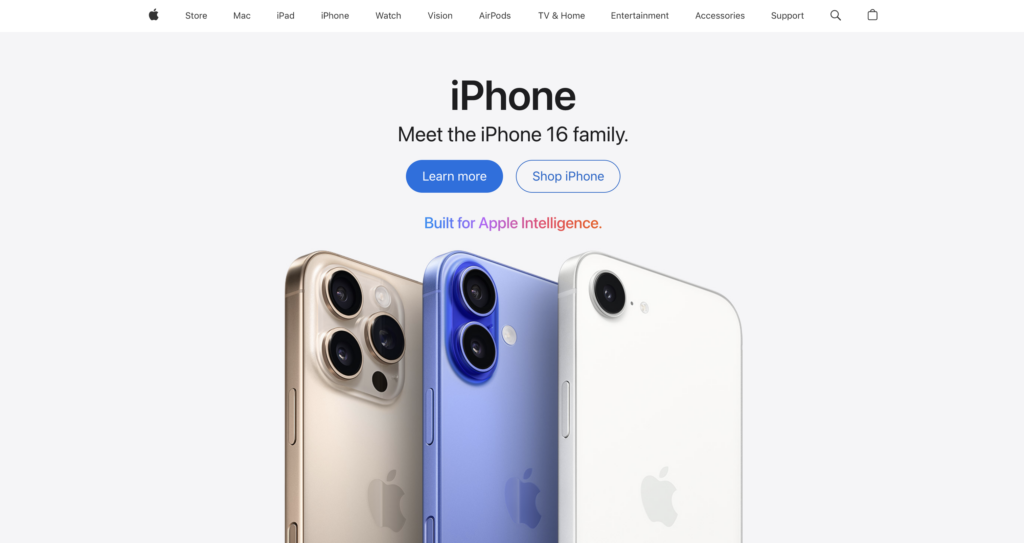
The popularity of Apple products plays a significant role in their third-place spot among the top online retailers in 2023. Statista states they are now the most valuable brand worldwide, with a brand value worth over $880 billion and a 2023 revenue of $383 billion. Shopping for electronics online is common, with about 41% of US consumers reporting to have bought an electronic device through digital channels in 2023.
Aside from the popular Apple devices like the iPhone, iPad, and AirPods, Apple.com also sells accessories for their devices, software, and entertainment products. They offer free delivery and pickup, with a two-hour delivery available. Extended returns are currently available until early next year as part of their special services for the holiday season. Finally, they also offer trade-ins of old devices to earn credit or buy a new one.
eBay
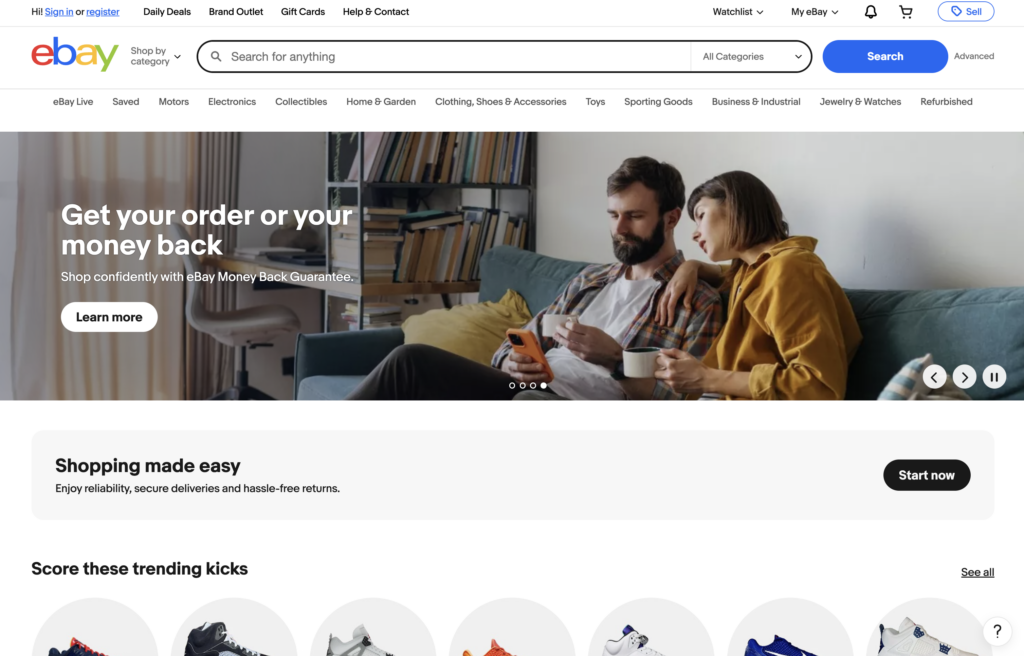
What started as an auction website in the 90s has become one of today’s biggest online marketplaces. eBay is fourth in ecommerce sales, getting 3% of the market share among online retailers. However, the website is second to Amazon for web visits, garnering 1.2 billion monthly visits against Amazon’s 4.8 billion visits in the first quarter of 2023.
In this age of ecommerce, eBay has transformed itself into an online shopping website that offers two pricing formats. Sellers on this platform can select if they want to sell their products via an online auction, where the highest bidder wins, or the more traditional fixed-price route, similar to other marketplaces. eBay’s market generally leans towards the more price-conscious and those looking for hard-to-find things, collectibles, and pre-loved items.
Like Amazon, eBay offers Guaranteed Delivery for buyers, which sets the delivery date at specific times, including within 1-2 days of purchase. The website also offers easy returns, including a money-back guarantee to protect consumers. Because eBay allows secondhand items to be sold on its platform, the risk of getting fraudulent or damaged items is higher on eBay than on Amazon, which may put off consumers from buying even new products from eBay sellers.
Target
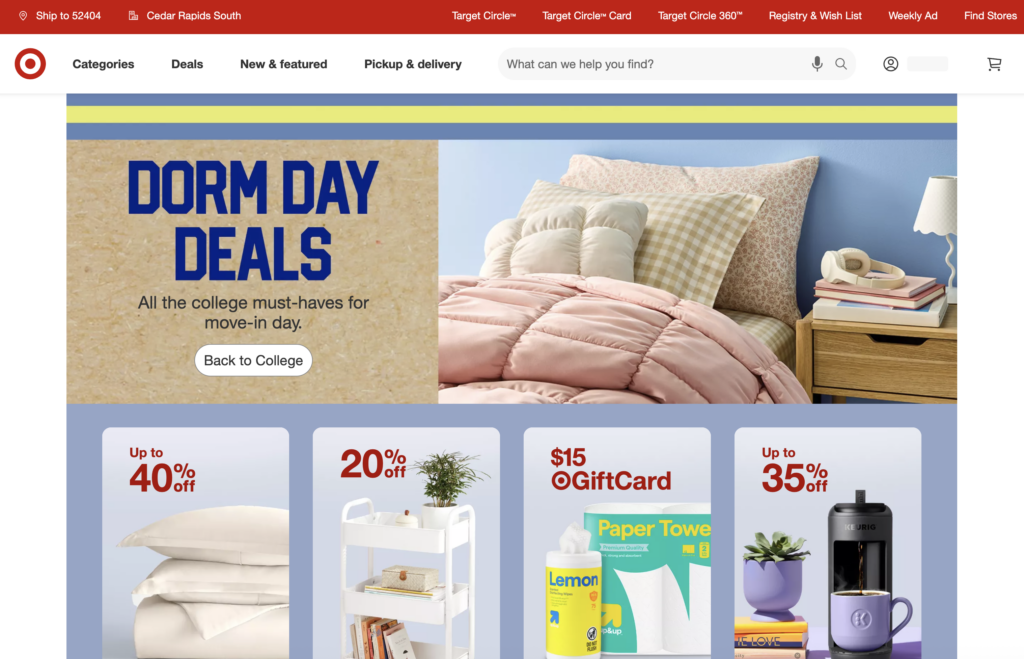
The fifth most popular and biggest online retailer in the US in 2023 is Target. While most of their revenue comes from sales from their physical stores, the retailer’s online counterpart, Target.com, is responsible for about a 2% share of retail ecommerce sales in the US, behind eBay.
Target is not as massive as one of its biggest competitors, Walmart, but its brand name and global reach are still huge. Target.com offers the same products online as in-store selections, including online exclusive deals. Offering same-day delivery options, order pickup, drive-up, and free 2-day shipping, Target checks off a lot of services that consumers expect from online retailers.
Consumer behavior and preferences in online shopping
Influencers do influence
About a quarter of social media users have bought a product based on an influencer’s review, according to HubSpot’s Consumer Trends Report. This percentage is higher if we focus on Gen Z, which rises to 40%. For this age group, influencers’ reviews and recommendations carry more weight in their purchase decisions than those of their friends and family.
Frequency of online shopping varies by income level
Unsurprisingly, people with household incomes over $100,000 shop online more frequently. Consumers in this group buy something online approximately once daily, with more than 82% using Amazon Prime.
Consumers shop on mobile devices and use voice search
As we’ve mentioned, technology is playing a vital role in ecommerce. Retail mobile commerce sales in the US amounted to $431 billion in 2022. Americans use their smartphones more frequently than tablets for these mCommerce purchases. In 2022, 92% of US shoppers between 30 and 49 purchased something online using their smartphone.
AI voice assistants are also rising, with more than 33 million customers using smart speakers to shop online. Health and beauty products and household supplies were the top products bought using voice search.
Clothing is the most popular for online shopping
Clothing and shoes emerged as the product categories that are more frequently bought online rather than in-store. According to a Statista report, 43% of consumers bought clothing online, while 33% bought shoes online. Consumers reported convenience, lower prices, and a more varied product range as the main reasons they preferred purchasing certain products from online marketplaces rather than in-store.
Wrapping up
The data tells a clear story: ecommerce isn’t slowing down anytime soon. While growth may have moderated from the pandemic peak, the upward trajectory remains strong as technological innovations continue to improve both the shopping experience and operational efficiency.
Consumers have fully embraced online shopping as a permanent fixture in their lives, attracted by competitive pricing, broader selection, and the convenience of home delivery and digital payments. As voice search, mobile shopping, and social commerce continue to evolve, the distinction between online and offline retail will likely become increasingly blurred.
For sellers looking to thrive in this competitive landscape, having the right tools makes all the difference. If you’re selling on Amazon, Seller 365 provides a comprehensive suite of tools that streamline everything from product sourcing to review management. Try it free for up to 14 days.
For those expanding beyond Amazon to platforms like Walmart, eBay, or your own storefront, Multichannel Pro offers a unified solution to manage listings, orders, and customer support across all your sales channels. Book a free demo today.
The future of retail is digital, diverse, and data-driven. The question isn’t whether online shopping will continue to grow. It’s whether your business is equipped to grow with it.



















